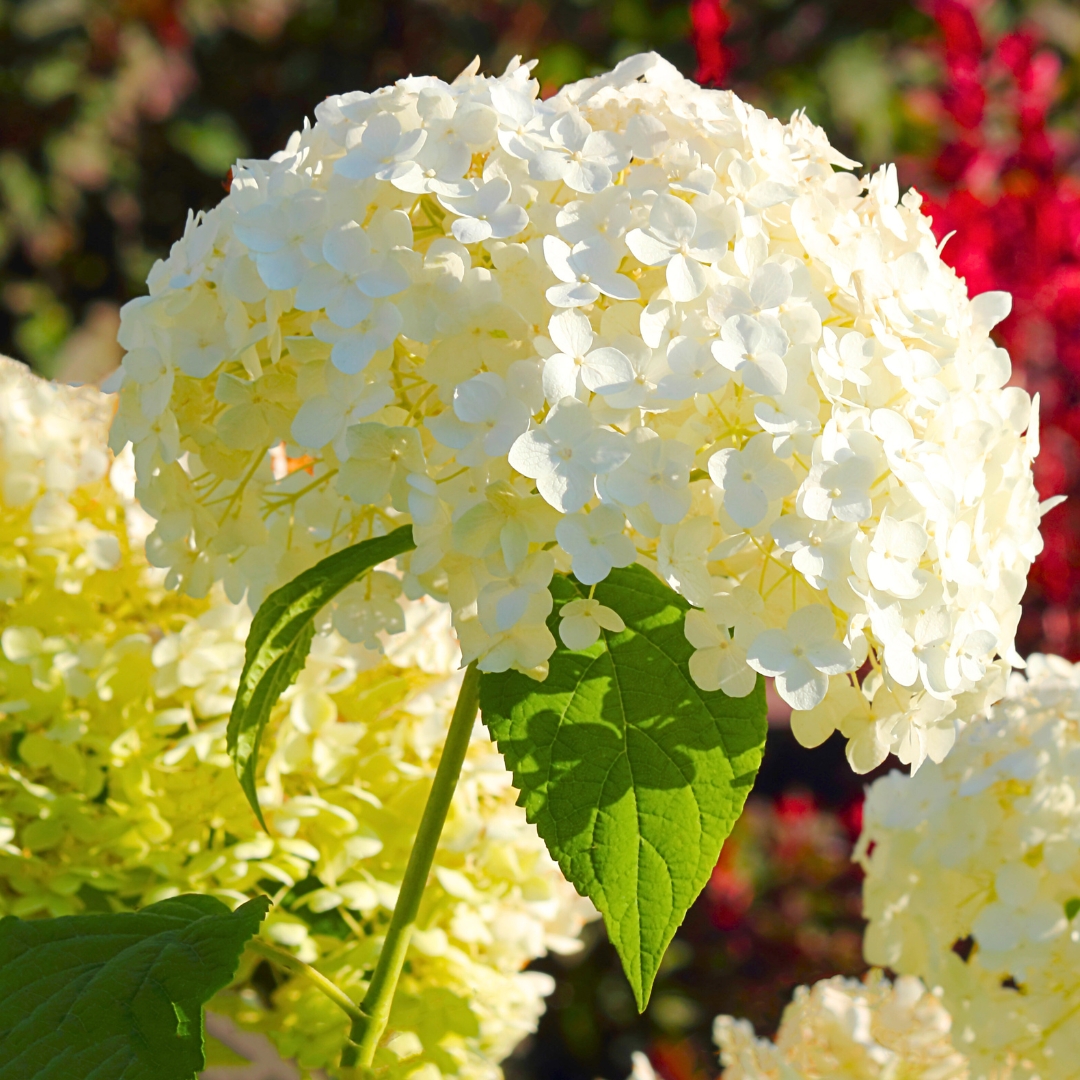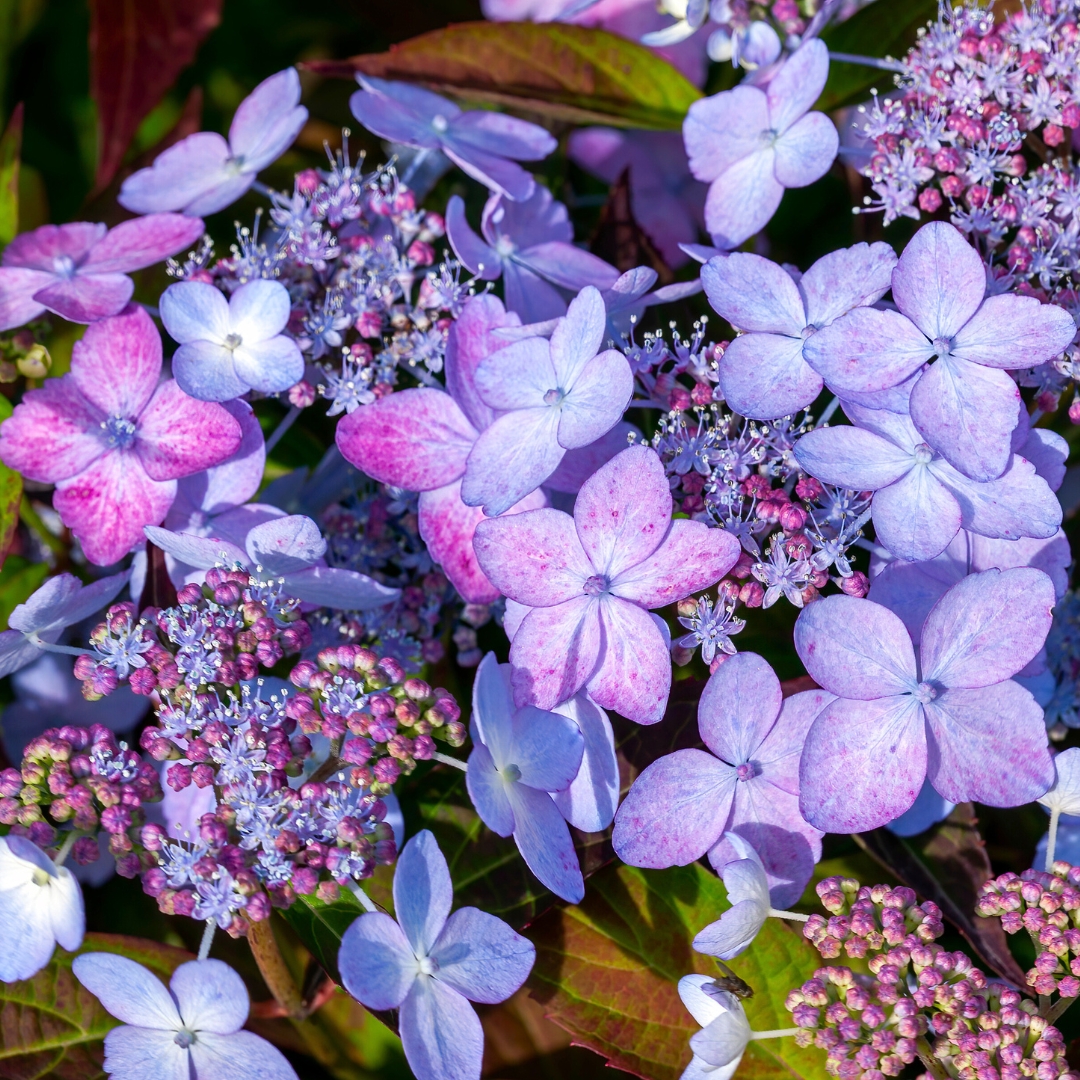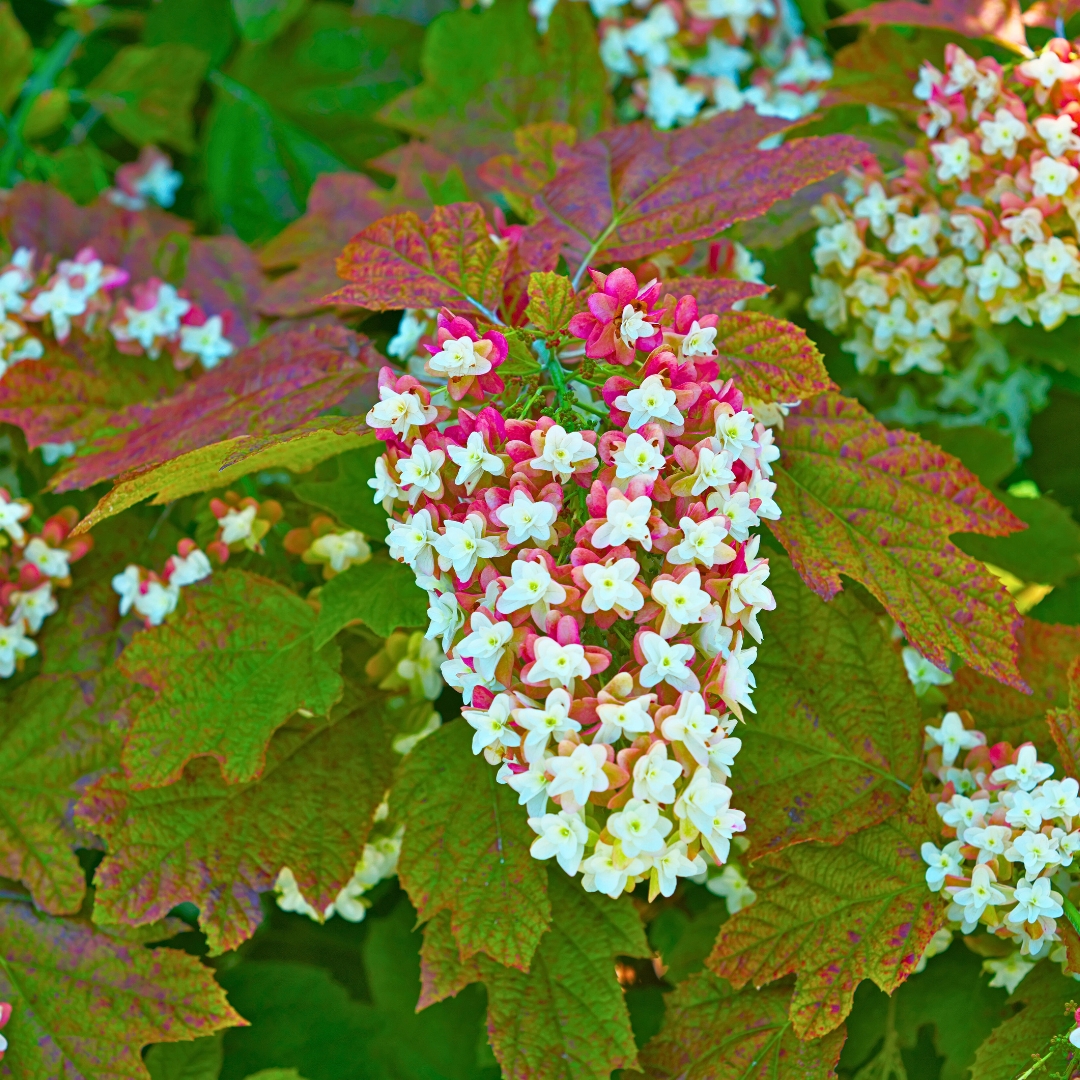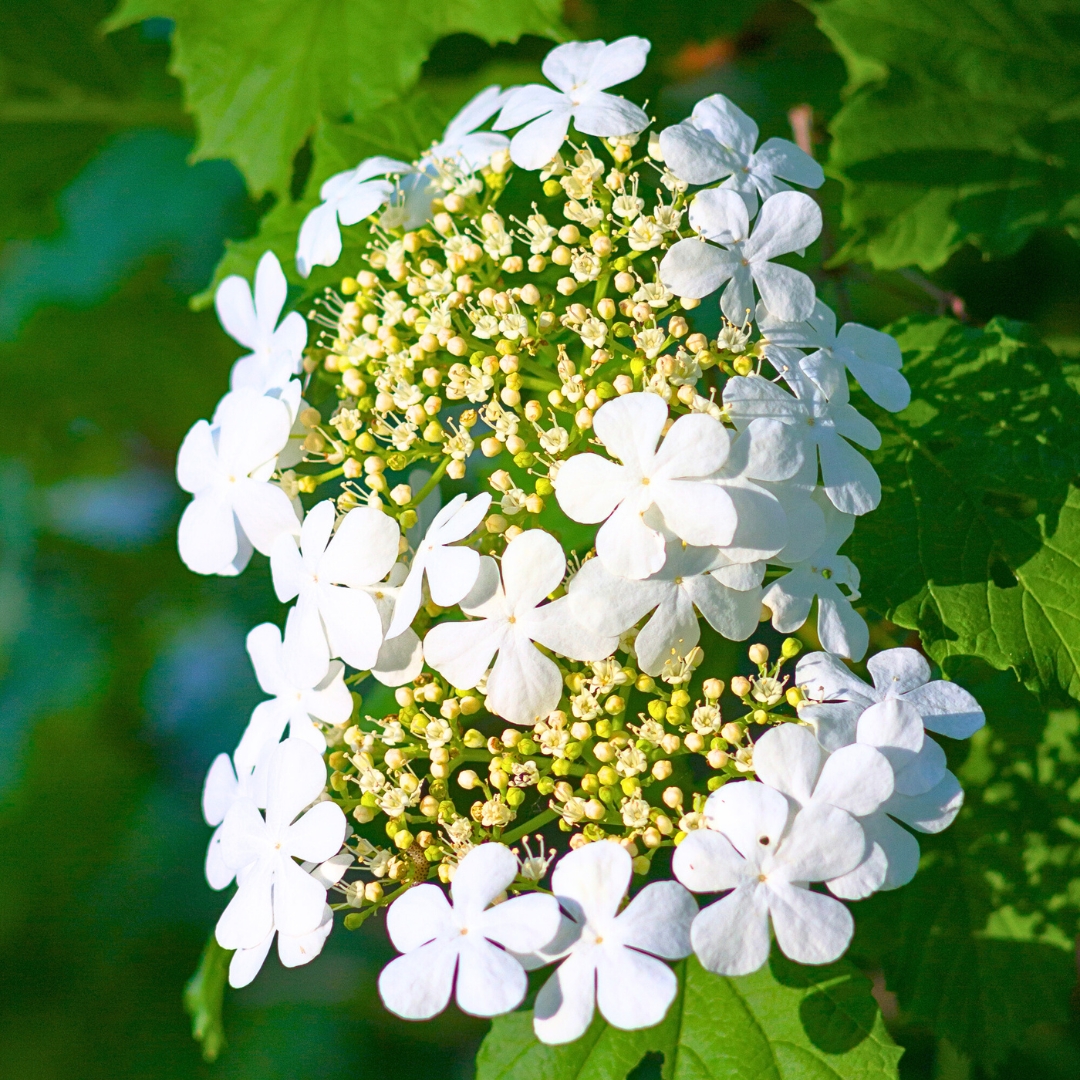While pruning your hydrangeas may initially seem simple and unintimidating, the timing and methods used are incredibly important to the well-being of your flowering shrub. Let us show you the best practices on when and how to prune your hydrangeas!
Know Your Hydrangea
The first, and most important step to pruning your hydrangea, is to first identify which hydrangea you have in your landscape. There are different times and methods of pruning for different varieties of hydrangeas. Mispruning your hydrangeas can lead to a loss of blooms, or less blooms the following year. Let us help you keep your hydrangeas happy for years to come!

Identifying Your Hydrangea
Identifying which type of hydrangea you have may seem intimidating, but we have identified a few key characteristics of these woody plants for you to make things easier. Once you are able to decipher which flowering shrub you have, just follow the pruning instructions below and you will be good to grow!
The types of hydrangeas include:
Hydrangea paniculata:
- common names: pee gee or panicle hydrangea
- flower color(s): start out white or green and will turn pink or red in the fall
- flower shape: cone
- flower buds bloom on: new growth

Hydrangea paniculata
Hydrangea arborescens:
- common names: wild or smooth hydrangea
- flower color(s): shades of pink or white
- flower shape: round
- flower buds bloom on: new growth

Hydrangea arborescens
Hydrangea macrophylla:
- common names: bigleaf or mophead hydrangea
- flower color(s): starts out green or off-white and turns pink or blue (dependent on soil ph levels)
- flower shape: round
- flower buds bloom on: old wood

Hydrangea macrophylla
Hydrangea serrata:
- common names: lace cap or mountain hydrangea
- flower color(s): either pink or blue (depending on the soil ph level)
- flower shape: flowers around the edges with pearl-shaped blooms in the center
- flower buds bloom on: old wood

Hydrangea serrata
Hydrangea quercifolia:
- common name: oakleaf hydrangea
- flower color(s): starts out white and turns pink or red in the fall
- flower shape: cone-shaped
- flower buds bloom on: old wood
- has large oak tree leaf-shaped foliage

Hydrangea quercifolia
Hydrangea anomala:
- common name: climbing hydrangea
- flower color(s): starts out green or off-white and will turn pink
- flower shape: round
- flower buds bloom on: old wood

Hydrangea anomala

hydrangeas
New Wood vs. Old Wood Blooms
Identifying your hydrangea is the first step to knowing how your new hydrangea blooms grow. There are different growth patterns depending on whether buds flower on new wood or old wood. It is important to understand the growth patterns of these flowers so that you do not prune them at the wrong time or prune them incorrectly.
Old wood buds grow on woody stems that are already existing. These buds will start to grow around fall time and will not begin flowering until the following spring. Incorrectly pruning these varieties could wipe out any new blooms for the following spring.
New wood buds cannot start until new growth happens. New stems must grow first before any buds can form on them. These hydrangeas can be pruned more aggressively, but do not require as much pruning to keep them happy.

pruning hydrangeas
Pruning
A good rule of thumb when pruning back stems is to cut them at a 45-degree angle and to not cut them too close to their new buds.
When pruning old wood growing buds, leave a few inches of space between the new buds and where you are cutting.
Paniculata, Arborescens, and Quercifolia
Paniculatas and arborescens are new wood growing hydrangeas. Pruning is typically done for these varieties in early spring before new growth begins. Start with cutting some stems all the way back to the closest set of new blooms. Cutting stems to different heights allows for new blooms to grow at different heights.
Although hydrangea quercifolias do bloom on old wood, they are typically less sensitive to pruning than macrophyllas and serratas. You want to prune them as you would the paniculatas and arborescens.
Macrophylla, Serrata, and Anomala
For old wood growing buds, like macrophylla, or serrata hydrangeas, the best time to remove dead flowers is as soon as they are done blooming. The latest that you want to prune them is in late winter or early spring. They need to be cut back before new growth can come in.
However, you can keep old flower heads throughout the winter for interest in your landscape. Keeping old flower heads on through the winter can protect your hydrangea from harsh weather, but is not necessary.
Similar to other old wood blooming hydrangeas anaomalas should be pruned immediately after they are finished blooming. However, this pruning should be done in the summer.
With all of these varieties, it is a good idea to start by pruning a few old branches at the base of the plant. Getting rid of around 2-3 old stems will promote new growth and keep your plant compact with more blooms every year.
While it is good to cut back some stems, you do not want to cut back too many. It is a good rule of thumb to not cut back any further than a third of the way down your hydrangea. For example, if your hydrangea is 9 feet tall, then you do not want to cut any more than 3 feet off the top. The same goes for the width of the plant.
When it comes to pruning old flower heads, use pruning shears to cut just below the head and above any new buds. Do not cut too close to the new buds because it can damage them.
Although no pruning is required to keep hydrangeas alive, it is still good practice to do so. Without pruning, hydrangeas will get leggy and produce fewer, more spread-out blooms over time. Keep your hydrangeas thriving with all that you now know!

lacecap hydrangea
Stop By Patuxent
Come by today and check out our vast selection of hydrangeas. Still have questions about pruning your hydrangeas? Speak with our plant experts today!


Leave a Comment
You must be logged in to post a comment.